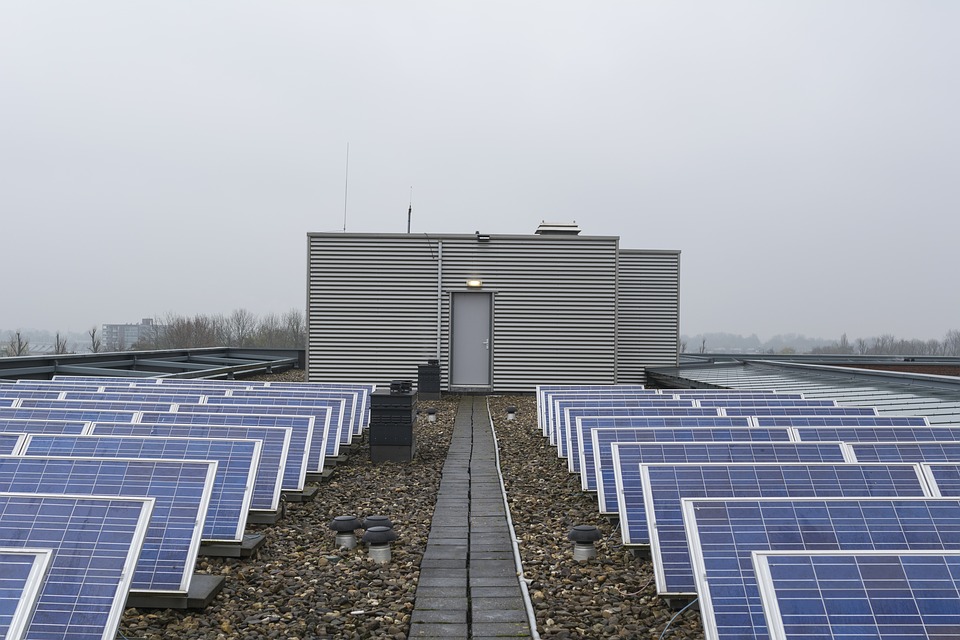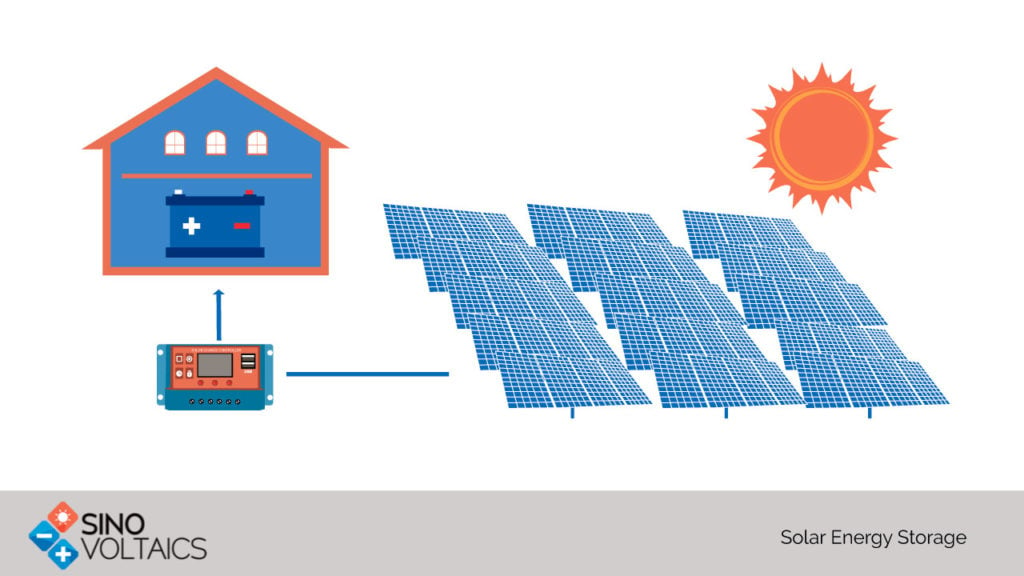Nickel Cadmium Batteries
HVAC System
Stationary Energy Storage
Thermal Run Away
Standards for Lead-Acid Batteries
Standards for Lithium-ion Battery
LTO batteries
Solid-state Li-ion batteries
[...]

 Steps Involved
Three steps are involved before we can use it later.
• Power cannot be stored. We must convert power to energy and store it. Conversion process should be efficient.
• Preserve it against leakage or internal dissipation. Preservation methodology will depend on the form in which it is stored.
• Recover when required (The sun is not available). Stored energy must be converted to electrical power suitable for use. In large commercial solar operations, it will have to be compatible with the grid. Again, the conversion losses must be minimized.
Storage Techniques
Energy is in multiple forms like radiation, gravitational potential, kinetic, thermal, chemical, electrical potential, and electricity. However, the following general forms are being investigated for solar energy.
Electrical energy Storage
Electric energy is stored directly in devices like (super-) capacitors or magnetic devices (using superconducting coils). These devices allow a quick discharge which is desirable in certain situations, e.g., in a charging an EV.
Mechanical Energy Storage
Two forms are possible:
• Kinetic energy of a mechanical device like a rotating flywheel. The energy stored is proportional to the moment of inertial of the flywheel, and the speed of rotation. Obviously, friction will cause losses over time.
• Pumped hydroelectric Storage (PHS)- This is a well-tried technique and is often used in conjunction with hydroelectric generation. Spare energy is used to pump water into an elevated reservoir from which water is drawn and allowed to run a turbine for regeneration of power.
• Compressed Air Energy Storage (CAES)- During off-peak hours, excess energy is used to compress air. The air can drive a turbine later to generate electricity and deliver to the grid.
Chemical Energy Storage
Energy can be stored in chemical form. These devices normally offer the least losses in storage.
• Battery- The lead acid battery is probably the most important conventional battery. Currently Lithium ion battery is popular while various other forms like flow batteries are being investigated but may not be very suitable for mass storage.
• Fuel Cells- Fuel cells are not yet commercial, although Japan has already announced a car which will probably use a fuel cell. Excess solar (or other) power can be used to break water into hydrogen and oxygen. When required, these elements are fed to a fuel cell which produces DC electricity. Multiple fuel cells are combined to produce useful amounts of power. Inverters can be used to produce AC if required.
Thermal Energy Storage
Thermal energy is stored as heat in various forms
• Sensible Heat- Storing simply as a rise in temperature of a material which may be liquid or solid. When required, the material is allowed to cool and the power extracted by a suitable heat machine. Molten salt is a popular material, although many new materials are being tried. Tight insulation is required.
• Phase Change Material Storage (PCMS)- When a material undergoes a phase change, eg, conversion of water at 100 degree C to steam at 100 degree C- heat is absorbed or released. The reverse process will yield that amount of energy.
• Sorption is the capture of a gas A by a solid or liquid substance B to form a system AB. When heat is applied, AB is split into compounds A and B, storing heat energy as the chemical potential of A and B. When A and B are mixed again to form AB the stored energy is released with minimum loss. Zeolite and metal Organic frameworks (MOFs) are being investigated.
• Solar Fuel – Concentrated sunlight is used to cause chemical changes and produce a useful fuel.
Steps Involved
Three steps are involved before we can use it later.
• Power cannot be stored. We must convert power to energy and store it. Conversion process should be efficient.
• Preserve it against leakage or internal dissipation. Preservation methodology will depend on the form in which it is stored.
• Recover when required (The sun is not available). Stored energy must be converted to electrical power suitable for use. In large commercial solar operations, it will have to be compatible with the grid. Again, the conversion losses must be minimized.
Storage Techniques
Energy is in multiple forms like radiation, gravitational potential, kinetic, thermal, chemical, electrical potential, and electricity. However, the following general forms are being investigated for solar energy.
Electrical energy Storage
Electric energy is stored directly in devices like (super-) capacitors or magnetic devices (using superconducting coils). These devices allow a quick discharge which is desirable in certain situations, e.g., in a charging an EV.
Mechanical Energy Storage
Two forms are possible:
• Kinetic energy of a mechanical device like a rotating flywheel. The energy stored is proportional to the moment of inertial of the flywheel, and the speed of rotation. Obviously, friction will cause losses over time.
• Pumped hydroelectric Storage (PHS)- This is a well-tried technique and is often used in conjunction with hydroelectric generation. Spare energy is used to pump water into an elevated reservoir from which water is drawn and allowed to run a turbine for regeneration of power.
• Compressed Air Energy Storage (CAES)- During off-peak hours, excess energy is used to compress air. The air can drive a turbine later to generate electricity and deliver to the grid.
Chemical Energy Storage
Energy can be stored in chemical form. These devices normally offer the least losses in storage.
• Battery- The lead acid battery is probably the most important conventional battery. Currently Lithium ion battery is popular while various other forms like flow batteries are being investigated but may not be very suitable for mass storage.
• Fuel Cells- Fuel cells are not yet commercial, although Japan has already announced a car which will probably use a fuel cell. Excess solar (or other) power can be used to break water into hydrogen and oxygen. When required, these elements are fed to a fuel cell which produces DC electricity. Multiple fuel cells are combined to produce useful amounts of power. Inverters can be used to produce AC if required.
Thermal Energy Storage
Thermal energy is stored as heat in various forms
• Sensible Heat- Storing simply as a rise in temperature of a material which may be liquid or solid. When required, the material is allowed to cool and the power extracted by a suitable heat machine. Molten salt is a popular material, although many new materials are being tried. Tight insulation is required.
• Phase Change Material Storage (PCMS)- When a material undergoes a phase change, eg, conversion of water at 100 degree C to steam at 100 degree C- heat is absorbed or released. The reverse process will yield that amount of energy.
• Sorption is the capture of a gas A by a solid or liquid substance B to form a system AB. When heat is applied, AB is split into compounds A and B, storing heat energy as the chemical potential of A and B. When A and B are mixed again to form AB the stored energy is released with minimum loss. Zeolite and metal Organic frameworks (MOFs) are being investigated.
• Solar Fuel – Concentrated sunlight is used to cause chemical changes and produce a useful fuel.